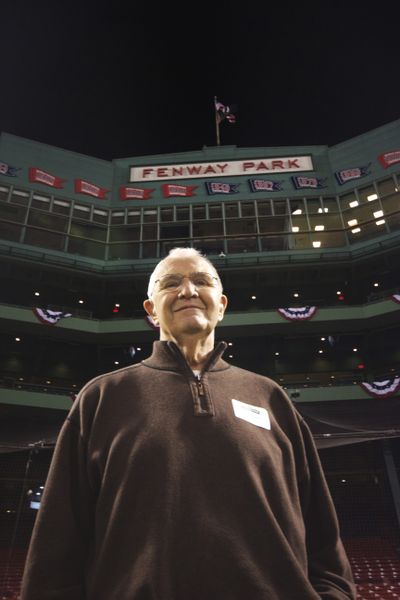Blanchette: Spring returns to Fenway

Baseball is so enamored with its dense history that even the footnotes are occasionally cast in large type.
Which is how it happened that Jack Spring was on the mound at Fenway Park again last weekend.
In uniform – one of the old flannel beauties, not today’s double-knit polyester. And with his name and “36” on the back.
“I didn’t even remember what my old number was,” he said, “but somebody had it.”
Everything about Fenway Park’s 100th birthday was a marvel to Spring, starting with the invitation that showed up in his Spokane mailbox a month or more ago.
“I thought, ‘This can’t be’ – I was only there a month and pitched in one game,” he said. “I didn’t think much of it until I shared it with my sons and they got pretty excited about it. So that got me excited.”
Forty-seven years have passed since Jack Spring’s last appearance in a big-league game, so it’s obviously not true that he was on hand when Fenway opened in 1912 – though at 79, he hears those suggestions.
“People often ask me how we pitched to Babe Ruth,” he cracked, “and I always say, ‘Under the boiler.’”
But he did pitch for seven major league teams in a 17-year professional career, and when he came home he coached West Valley High School to a state championship. Those distinctions got him inducted into the Inland Northwest Sports Hall of Fame several years back, and yet it only took one inning to have him summoned back to Fenway for the big day.
Hey, it was a good inning.
In a 7-5 loss to Baltimore 55 years ago Sunday, Spring pitched the ninth and got Joe Ginsburg to ground to shortstop and struck out Willy Miranda and pitcher Mike Fornieles.
“Maybe if I’d struck out the other guy,” Spring joked, “I’d have stayed longer.
“But it was a situation in which they had veterans and a left-handed starter was not that important with that short porch in left.”
So on May 2, Spring was optioned to the San Francisco Seals, where he spent the last season of the “old” Pacific Coast League, pitching well (11-9, 3.19 ERA) for a team that won 101 games. Midway through the next season – battling an arm injury he suffered in spring training – he was traded to Washington. He’d return to Fenway with the Senators and Angels over the next few years and never give up a run.
“Fenway is a special place in the history of baseball,” he said. “The fans are so great – although needless to say, they weren’t too happy with Bobby Valentine over the weekend.”
Getting smoked by the Yankees took a bit of the shine off the celebration weekend for the fans, yes. But maybe not so much for the more than 200 respondents to the Sox’s cattle call for all living players and coaches to come on back – or their families. Spring’s sons, for instance, took the opportunity to add their names to the signatures that decorate the walls inside the Green Monster scoreboard.
Spring, meanwhile, soaked up the chance to reconnect with old teammates – Frank Malzone, Ted Lepcio, Ike Delock – and other former Sox he played with at other stops, like Luis Tiant. He especially enjoyed seeing Bill Buckner, his teammate in his final pro stop in 1969 – the Spokane Indians – before Buckner’s brush with World Series infamy in 1986.
Billy Buck still got a warm reception from the Fenway fans. So did favorites like Carl Yastrzemski, Jim Rice, Carlton Fisk and recently deposed manager Terry Francona.
“And when they wheeled Johnny Pesky and Bobby Doerr out,” Spring said, “it brought down the house.”
A number of Spring’s 1957 teammates have passed, of course – including another who would have brought down the house. Spring’s thoughts couldn’t help but drift to Ted Williams on his visit.
Spring training in Sarasota, Fla., was a few days along in 1957 when Williams finally reported. Spring was a newbie then, having pitched Triple-A in Miami the year before and then being selected in the minor league draft by Boston. That morning, the clubhouse door along the right field line opened and out came Williams, getting loose for the day.
“He’s jogging all around and I’m trying not to stare,” Spring recalled. “I’m standing in left field and pretty soon he ran right up and nudged me and said, ‘Hi, Jack – how’d you like it in Miami last year?’
“I didn’t think he knew I was even alive. But he was a student of pitchers, and it didn’t matter if it was an opposing pitcher or one on his team – there was always the possibility he’d have to face you.”
Sure enough, when the Senators visited Boston the next season, Spring was on in relief when who should come to the plate but Williams?
He singled.
Making Jack Spring a footnote yet again in the history of Fenway Park.